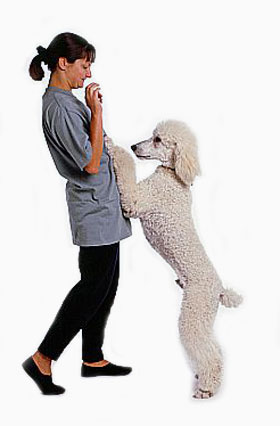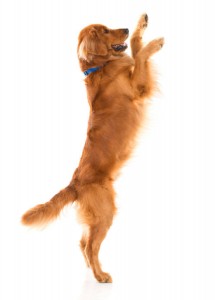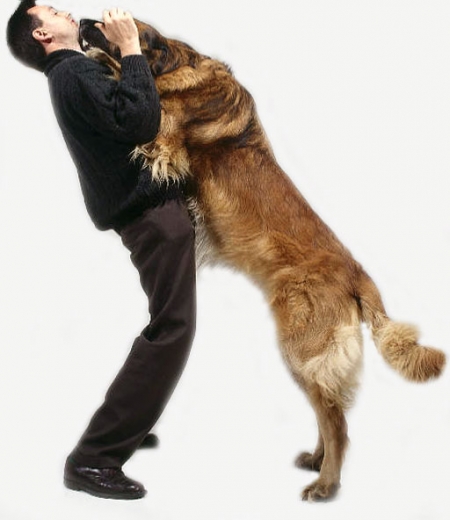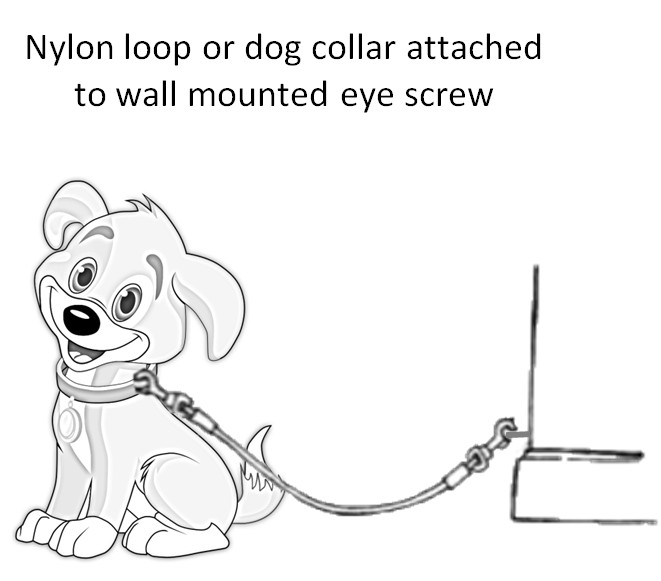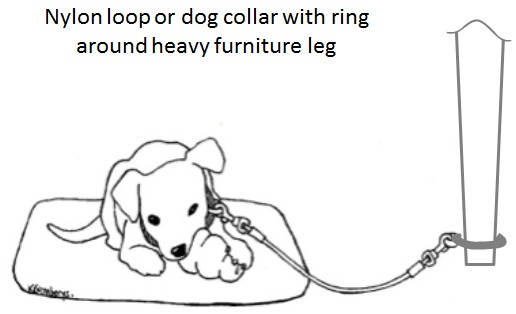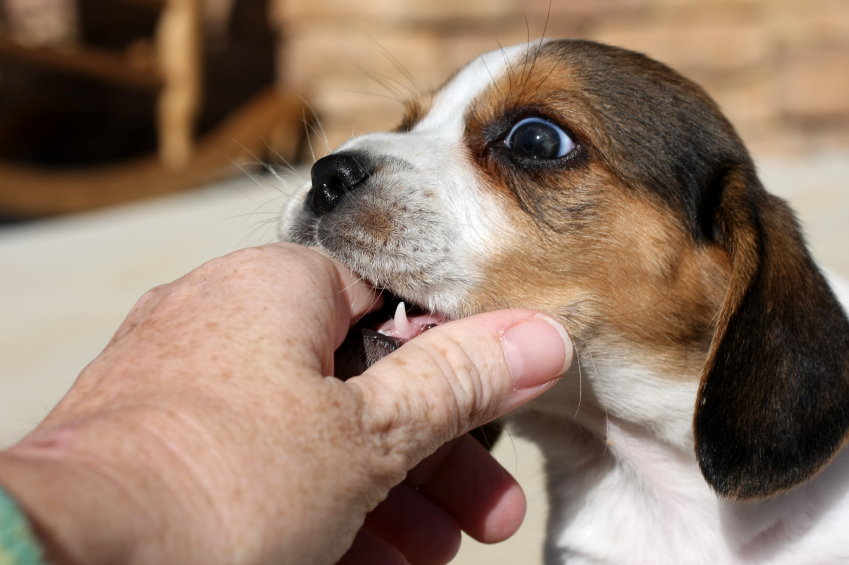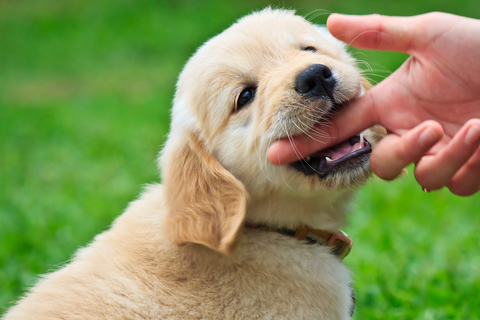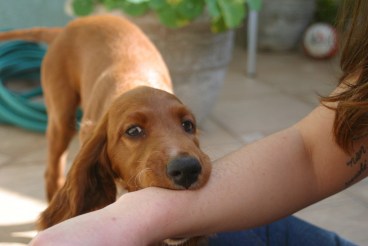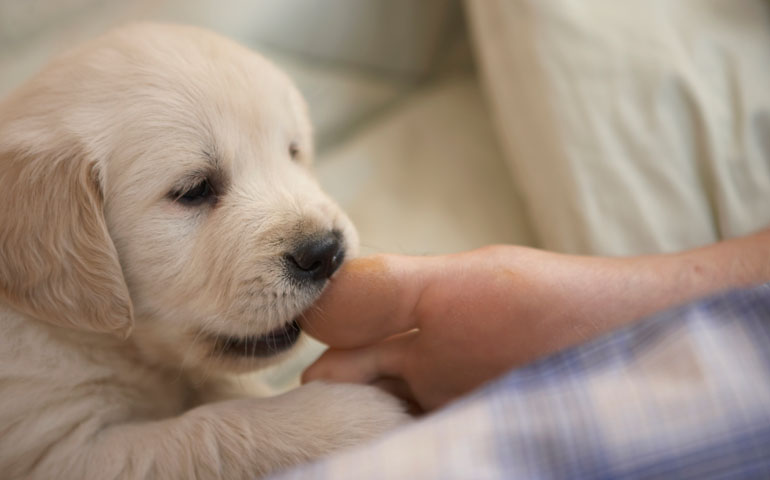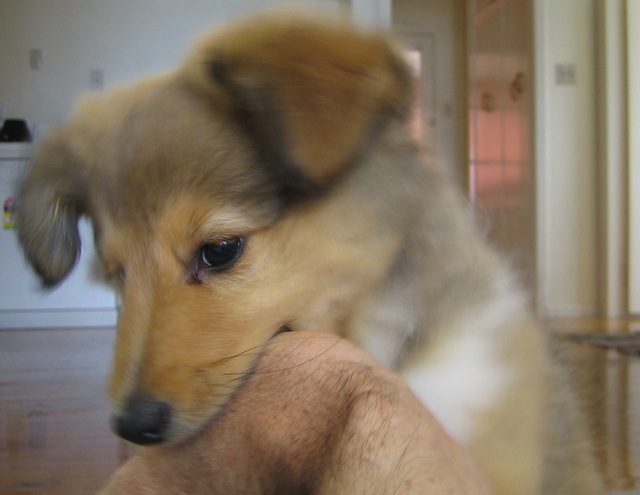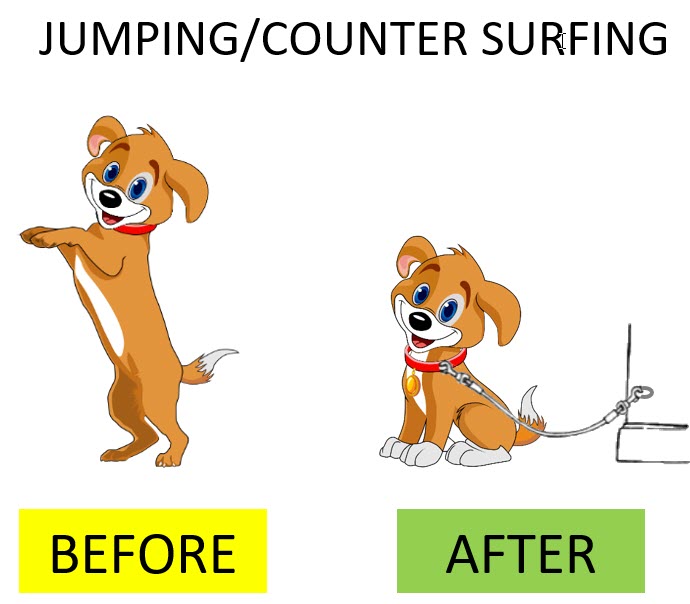Why do dogs jump on you to say “Hello?” Because they’re excited and happy to see you! Jumping up on you is a dog’s way to get your attention and express its enthusiasm! While jumping to greet is a natural, normal way for dogs to greet other dogs, most people would prefer that their dogs greet them calmly, with paws on the floor. The good news is that you can teach your dog how to greet guests without jumping on them by using this simple technique.
Unfortunately, all too many people use ineffective, time-consuming, or harsh methods to teach their dogs not to jump on them and their guests.
The good news is that training your dog to greet calmly with all four paws on the floor may be quickly and easily accomplished using positive, dog-friendly techniques and tools.
In order to implement this technique, you’ll need a 3’ chew-proof tether or tie-down, and a comfy bed or blanket for your dog to lie on.
Where to Locate the Tie-Down
Locate the bed and tie-down near the front entrance to your home, but not at the front door. The anchor point should be about 6-8 ft. from the main entrance. Avoid placing the tether in a narrow hallway.
Securely attach the tie-down to a heavy piece of furniture, the bottom rail of a nearby stairwell, or use an eye-bolt to secure the tie-down into a nearby wall.
How to Teach Polite Greeting Manners
The objective of this technique is to teach your dog that having his paws on the floor means he can receive attention from people, but that jumping on people makes them go away.
Begin the exercise by knocking on the door, and ringing the doorbell. Once inside the door, pay attention to your dog’s paws. If all four paws are on the floor, your guest can pet your dog, and even give him treats.
If, at any point, your dog’s paws leave the floor, your guest should immediately turn and quickly walk away or exit the front door. Wait two minutes, and then repeat the exercise.
Work this setup many times on different occasions with a variety of people over a period of several weeks. If you and your guests are consistent with your responses, your dog will soon learn that “all four on the floor” pays, and that jumping makes the person go away. This exercise takes practice and consistency, but it works remarkably well.
After several weeks of consistent practice and calm greeting behavior, you can try this same exercise without the tie-down. If at any time your dog starts to jump again, simply go back to using the tie-down until he stops.
Plan Ahead for Best Results
Teaching a dog not to jump to greet requires that you plan ahead for guests, and attach the tie-down to your dog before they enter the home. Be proactive. Let your guests know that your dog is in training, and ask them not to pet, treat, or pay attention to your dog when he is jumping up. Remember that your dog gets paid with petting, attention, and occasional treats, only when “all four are on the floor.”
With consistent practice, your efforts will pay off. Every time your dog chooses a calm, controlled greeting over a rough and rowdy jump-fest, you’ll be rewarded many times over. Happy training!
